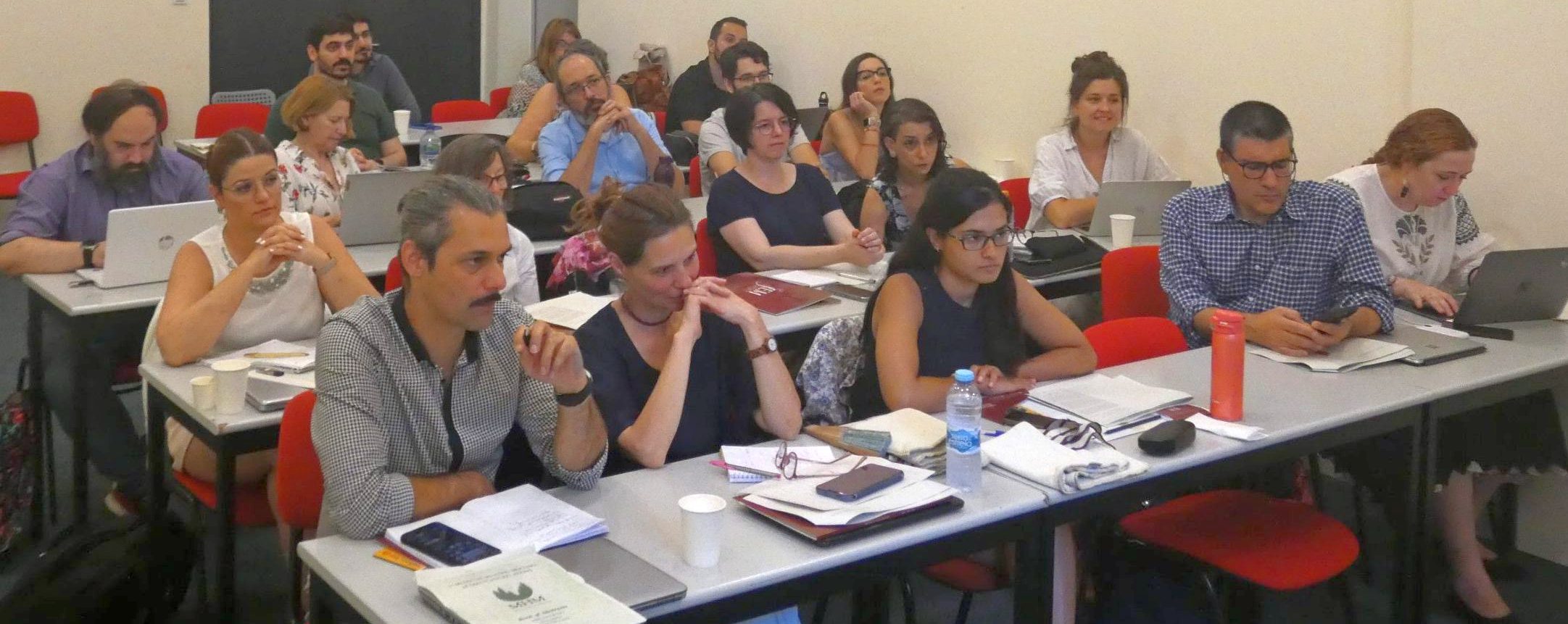
Synopsis: 1st Medieval Hunting Meeting
.
The 1st Medieval Hunting Meeting, organised by NEMUS jointly with the Institute of Medieval Studies (IEM NOVA/FCSH), succeeded in fulfilling its primary purpose of promoting exchange and interdisciplinary debate around the history of the fascinating relationship between humans and canis. This journey through a shared past started with a journey some 8,000 years into the past and the latest advances in the field of genetics, increasing our knowledge of a domestication process which progressively separated dogs and wolves until the present day (Ana Elisabete Pires).
This was the background needed for the remaining contributions, all focussing on the middle ages, which formed the rest of the meeting. Papers explored the different types of dogs surrounding the Portuguese monarchs, as kept by hunting officials (Afonso Soares de Sousa), and the intimate bond established between hounds and hunters, so clearly demonstrated in several medieval Castilian hunting treatises (Marthe Czerbakoff). In addition, the few but extremely significant traces of canine veterinary medicine existing in Portuguese erudite sources were identified, probably for the first time (André Silva).
However, while dogs and human societies were getting closer, wolves remained controversial figures in the eyes of humankind, forming a relationship that is not at all easy to understand, and often resulted in clashes. Over the ages, such encounters supplied countless stories, and proved fertile ground for academics in a number of different fields. This has yielded vast multi-disciplinary research about this animal, especially in recent years (Aleks Pluskowski). Following on from this, we delved into the domain of literature and the perceptions of the wolf at the imaginary, poetical level (Ana Paiva Morais). The Portuguese medieval documentation, on the other hand, allows us to reflect about a relationship existing between two animals (human and non-human) that competed for the same prey, but were unwilling to share the spoils (Andreia Fontenete Louro).
Moving on from wolves to dogs, we heard about the many-sided (and culturally sweeping) representations of the medieval dog (Kathleen Walker-Meikle). Dog iconography, as well as other animals’ is well represented also in sculpture, as is the case with Romanesque heritage in northwestern Portugal’s Entre-Douro-e-Minho region (Silvana Vieira de Sousa). Contrary to common belief, dogs could be used in Galician-Portuguese courtly literature of the Iberian Peninsula to mock and deride, often recurring to bawdy language and humour (Fabio Barberini).
The many and diverse contributions to this first MHM meeting were summarised in the final remarks. This intervention materialised the usefulness of broader, interdisciplinary approaches to human-animal relations and animal history, translating it into common research threads and directions (Tiago Viúla de Faria). This helped wet the appetite for a written version of the papers presented and the insightful debate at this event. The organising committee would like to thank all those involved in the preparation of this event, highlighting the fundamental support of the Scientific Committee, and all those who came to the Colégio Almada Negreiros, making our seminar room look too small.
Afonso Soares de Sousa
Diana Martins
Tiago Viúla de Faria
.
Watch the vlog for the event here!
.
.